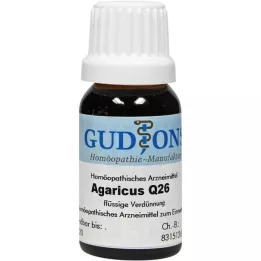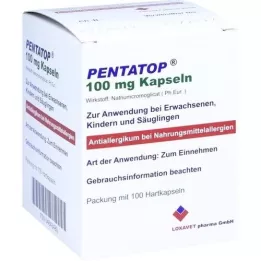-14% 

MilkCheck Dermest, 1 pcs
MILCH CHECK Test
Proizvođači: NanoRepro AG
Model: 01301985
Doziranje: Test
Sadržaj: 1 St
Nagradni bodovi: 176
Dostupnost: Nema na skladištu
$36.12
$30.96
iz Njemačkih ljekarni na Vašu adresu
-14% 

Upute za korištenje MilkCheck Dermest, 1 pcs
Instructions for use for: MilkCheck Dermest, 1 pcs
Milk check is a quick test for the self-use at home. The test serves the independent pre-diagnosis with suspicion of milk allergy. MilkCheck offers a simple, safe and accurate way to measure an increased allergy antibody mirror of the type immunoglobulin E (IGE) against milk in the blood. An increased IgE value indicates a higher allergy susceptibility. Only a small amount of blood is required for the test. Milk check proves demonstrably comparable results like laboratory tests. The application of milkcheck should help you assign your complaints such as abdominal pain, nausea, vomiting and diarrhea to cause a cause. If the antibodies are in their blood, this is a significant indication of a milk allergy.
The test uses the reliable cassette test procedure with which it can quickly determine whether IgE antibodies are detectable in their blood. With a single blood drop from the fingertip, milk check has a milk allergy with a security of more than 95.
How do I turn milk check?
With milk check reliably and quickly determine whether they are affected by a milk allergy. The short test Milkcheck was specially developed for the uncomplicated handling at home and gives them a clearest test result after a short time.
1. Preparation
The test set should be stored and used at normal room temperature. If it was stored at substantially lower temperatures, the locked test set must be left at room temperature for at least 2 hours. The test set should be used within 30 minutes after opening of the foil bag. Wash your hands with soap and warm water. Rinse thoroughly with warm water. Dry it with a clean towel. It is important that your hands are warm and dry, as this improves blood circulation and it is easier to remove the blood sample. Looking for a quiet place to perform the test, best sitting at a table.
Now open:
The pack with the sterile lancing help and the blood transmission tube. The foil bag with the test device. Do not pull on the blue slider and move it only when it depends (15 minutes after adding the reagent solution). Place the test device and the vessel with the reagent solution to a clean, level pad.
2. Taking blood
This is quite simple and hardly noticeable. It is only a small drop of blood required. Do not use the lancing help if the blue (with ?? "marked) tip is missing. Massage your finger from which the blood sample is to be taken (preferably the medium or ring finger), with slight pressure by repeated, gentle stress with the thumb of the other hand to fingertip. Turn and pull the blue tip from the lancing help. You now see the underlying white, sprung edition. Keep the lancing help with your thumb and forefinger of your free hand on the grip wells and press the white edition firmly against the soft top of the finger until you hear a click.
The lancet is immediately retracted into the lancing help to securely dispose of it. It can not be used again. Wipe the first blood drops with a dry paper towel from the fingertip. It is important that you press the lancing help completely against the fingertip because the skin is otherwise not pierced.
3. Collecting the blood drop
Massage your finger with the thumb of the other hand several times gently to the fingertip, the nail showing upwards until a large drop of blood appears.
The fingernail should continue to be directed upwards while keeping the tube horizontally and touching the blood drop with its tip. Add blood to the transmission tube until it reaches the recorded marker.
Attention: The tube automatically fills itself (capillary effect). Never squeeze the tube while filling it with blood. The use of too little or too bigthe amount of blood can falsify the result.
4. Transfer of the blood into the test device
To transfer the blood into the test device, touch the smaller trough of the test device with the tip of the tube.
Push the pipette gently to give the blood into the trough. If the blood does not escape, grab the tube on both sides of the black level marks, hold it vertically over the trough and press the pipette together. Wait about 1 minute until the blood was absorbed. Then dispose of the transmission tube.
5. Addition of the reagent solution
Carefully unscrew the lid of the vessel with the reagent solution and pour the entire contents of the vessel in the large depression just below the trough with the blood. Wait exactly 15 minutes. After the reagent was added, the test device must no longer be moved. If the vessel with the reagent is not completely filled with light blue liquid, contact us.
6. Pull out the slider
Only take the test device into the hand after exactly 15 minutes have passed. Keep it horizontally and pull the blue slider until it snaps into place. The test procedure display changes from blue to white. Place the test device back to a level underlay and do not move it on. If your IGE mirror is very high, a positive result can already be within 15 Be visible. To clear a negative result clearly, it is necessary after pulling the blue slider 30 minutes to wait. Do not wait more than 30 minutes, otherwise the result can not be read exactly.
7. Interpreation of the result
Positive:
A pink or red bar next to the symbol △ suggests that the test was performed correctly.
A pink or red bar next to the symbol □ means that an increased amount of IGE allergy antibodies has been measured and that they may be allergic to this particular substance. Even a palate pink bar next to the symbol □ should be considered a positive result.
A positive result is significant only if they actually have allergy symptoms or have had in the past.
In addition to the symbol ○ should not be visible, this is the negative control. If a bar appears next to the ○, the test result is invalid and you should contact the manufacturer of the test
Negative:
A pink or red bar next to the symbol △ suggests that the test was performed correctly. The bar serves the positive control.
Next to the symbol □ no pink or red bar appears, no increased amount of IgE allergy antibodies in the blood was found.
In addition to the symbol ○ should not be visible, this is the negative control. If a bar appears next to the ○, the test result is invalid and you should contact the manufacturer of the test.
To clear a negative result clear, it is necessary to wait for 30 minutes after pulling the blue slide. Do not wait more than 30 minutes, otherwise the result can not be read exactly.
Invalid:
If next to the symbol □ a bar appear without the symbol △ a bar appears, the result is invalid. The test was not performed correctly.
Source: www. milchcheck. de
Status: 12/2015
Recenzije lijekova
Sabrina Wimmer
12/5/2021
Sve je urađeno prema uputama, ali se ništa nije pojavilo u testnom polju, čak ni traka za grešku.


